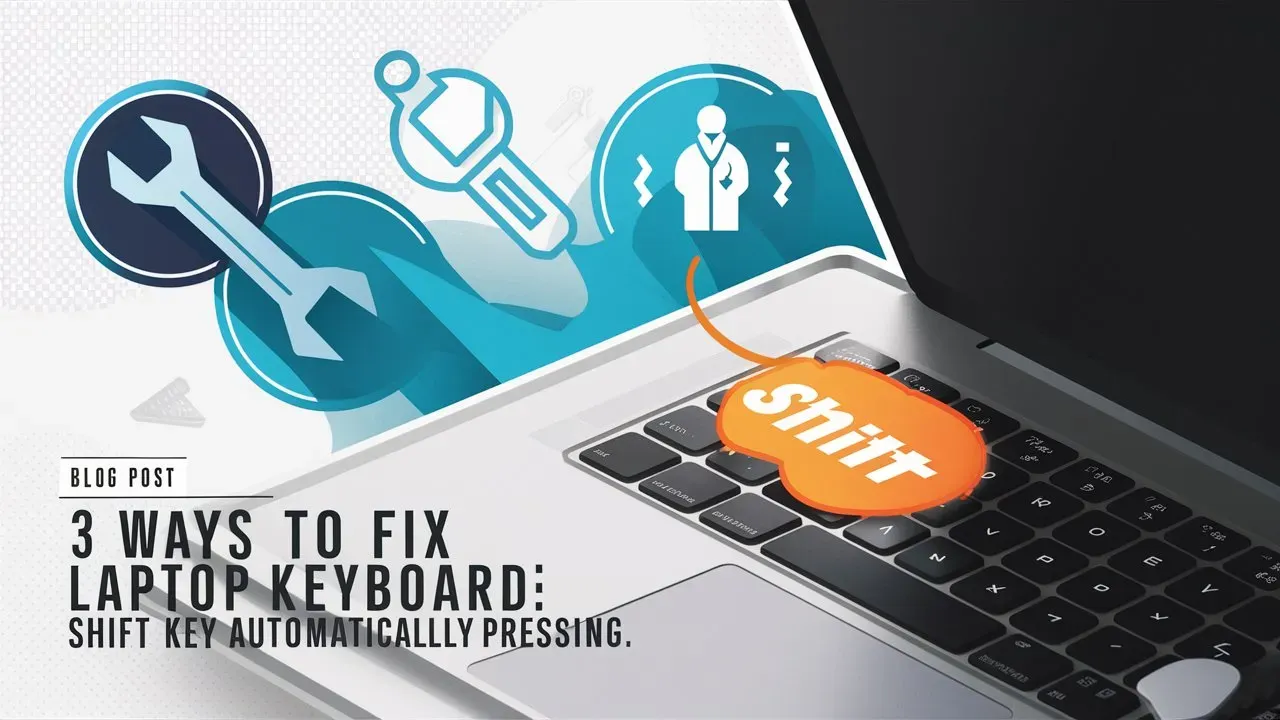Is your laptop’s keyboard acting strange, especially the shift key that seems to press on its own? This problem can be really annoying, especially when it messes up your typing and slows you down. It could be caused by software bugs, dust getting stuck under the keys, or hardware issues. But don’t worry! You don’t have to rush to a technician just yet.
There are a few easy ways you can try to fix it yourself. In this guide, we’ll go over three simple steps to help you get your keyboard back to normal. From quick software checks to more in-depth hardware fixes, you’ll learn what to do to solve the issue and get back to typing smoothly. Let’s get started and fix that stubborn shift key!

3 Ways To Fix or Solve Laptop Keyboard Issues : Shift Key Automatically Pressing ::

1. Checking If Its Keyboard Issue or Windows Issue :
To check if the problem with your shift key is due to your laptop’s keyboard or a Windows software issue, try connecting an external keyboard to your laptop. Here’s how:
- Plug in the external keyboard: Connect a USB or Bluetooth keyboard to your laptop.
- Test the shift key: Type using the external keyboard and see if the shift key behaves normally.
- Compare the results:
- If the shift key works fine on the external keyboard, it’s likely a hardware issue with your laptop’s keyboard (e.g., dust or a broken key).
- If the shift key issue persists on the external keyboard, it may be a Windows or software-related problem.
This simple test helps you figure out if the problem is with the laptop’s keyboard itself or a deeper issue in the system.
If the shift key works fine in a external keyboard, There is an issue in your laptop’s keyboard, Get it replaced or repaired from nearby laptop technician.
If there is same error even after connecting the external keyboard, There is a problem in your windows or operating system. Find other 2 ways below to fix that.
2. Reinstall Windows :
If the shift key issue continues even with an external keyboard, it could be a Windows-related problem. In that case, reinstalling Windows might help resolve any underlying software errors. Here’s a simple guide to reinstall Windows:
- Backup Your Data :
- Before starting, make sure to back up all important files, as reinstalling Windows will erase everything on your system drive.
- Create a windows installation USB :
- Download the Windows Media Creation Tool from Microsoft’s official website.
- Follow the instructions to create a bootable USB drive with Windows installation files.
- Reinstall Windows :
- Insert the USB into your laptop.
- Restart the laptop and boot from the USB (you may need to press a key like F2, F12, or Delete to enter the boot menu).
- Follow the prompts to reinstall Windows. Choose the option to format the drive and install a fresh copy of Windows.
- Install Drivers & Updates :
- After the installation is complete, install any missing drivers, update Windows, and restore your backed-up files.
- This process should resolve any software-related issues that might be affecting the shift key.
If reinstalling Windows doesn’t fix the issue and the shift key is still acting up, it might be a hardware problem with your laptop’s keyboard. In that case, the third option is disable the shift key from working.
3. Disable the Shift Key From Windows :
If you’ve checked the keyboard and reinstalled Windows, but the shift key is still causing problems, you can try disabling the Shift key to stop the issue. Here’s how you can do it:
Disabling the Shift Key Using Sharpkeys :
- Download the Sharpkeys application from GitHub. Sharpkeys Download
- Install the Sharpkeys in your windows.
- Launch the Sharpkeys and click on Add.

- Click on “Type Key” and it will automatically fetch the key and click okay.

- On the other side, Select Turn Key Off & click ok.

- Now, Click on “Write To Registry” and Restart your computer.

- After restarting, the key has been disabled and your issue have been solved.
Checkout Top 5 Must-Have Third-Party Apps to Install on Your Windows 11 PC
Discover more from Owrbit
Subscribe to get the latest posts sent to your email.











